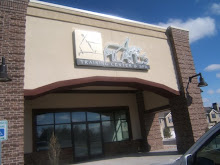Wednesday, February 2, 2011
Perfect Form
Get That Washboard Stomach
THE PLANK
by Moira MerrithewTHE PLANK
Often referred to as one of the most effective strengthening exercises, the plank position can be used by almost all exercisers at any fitness level. In its most simple version, the torso is held in a neutral position while resting on the hands, arms extended under the shoulders, legs adducted and scapulae stabilized. Maintaining the plank position requires isometric contractions from the core stabilizers including transversus abdominis and multifidus.
Engagement of the internal and external obliques as well as the rectus abdominis is needed to ensure neutral alignment of the spine. Scapular stabilizers including the serratus anterior, middle and lower trapezius and latissimus dorsi are also targeted to hold the shoulder blades in optimal alignment. In the lower body, adductors of the inner thigh help to maintain pelvic position and to activate the muscles of the pelvic floor.

Glutes and hamstrings are also involved in holding the pelvis and femurs stable throughout the duration of the exercise. Successful execution of the plank encourages a fullbody connection and optimal strengthening. Modifications of the plank can be performed with either the elbows or knees flexed, reducing the number of joints being stabilized.
Pilates-specific variations of the plank include the “Leg Pull Front Prep” on the mat. The “Leg Pull Front Prep” is an excellent exercise to build up to the full plank while ensuring the best possible alignment. To begin, kneel on hands and knees with the hands right under the shoulders and the knees on the mat. The knees should be slightly behind the pelvis, the hips slightly extended with the legs adducted and the toes tucked under. Most importantly, the lumbar, thoracic and cervical spine should all be in neutral alignment.
On an exhale, extend the knees while maintaining the stable neutral position in the spine and shoulders. On an inhale, flex the knees and lower them down to the mat. Gradually extend the length of time in the plank position by adding breaths while there.
Moira Merrithew
~ is the Executive Director Education at STOTT PILATES®
www.stottpilates.com Courtesy of Can-Fit-Pro
www.canfitpro.com
~ is the Executive Director Education at STOTT PILATES®
www.stottpilates.com Courtesy of Can-Fit-Pro
www.canfitpro.com
Subscribe to:
Post Comments (Atom)

Aspire Pilates Training Center & Spa
2464 W. 12600 S. Suite 190
Riverton, Utah 84065
801-302-5720
www.aspireptc.com
About Me
Blog Archive
-
▼
2011
(42)
-
▼
February
(34)
- 8 Ways to Stick to Your Diet While Friends Indulge
- Keep Your Joints Healthy
- Almond Crunch Arbonne Protein Shake
- Importance of Sleep
- Vitamin C
- Crispy Nut Butter Treats
- Sweeteners
- Water
- Dietary fiber: Essential for a healthy diet
- Piña Colada Arbonne Protein Shake
- Aerobic exercise: How to warm up and cool down
- Minerals
- Gluten Free & Vegan Peppermint Patties
- Face the Fats
- Finishing up Week 2 of the 28 Day Challenge....
- Happy Valentine's!
- What is YOUR Goal? ...
- Digestive Enzymes
- Nutty Apple Cinnamon Arbonne Protein Shake
- Relaxation
- Stress
- B Vitamins
- Arbonne Protein Powder Pancakes
- Good Carbs vs Bad Carbs
- First Week of 28 Day Challenge....
- Detoxification
- Probiotics
- Pumpkin Spice Protein Shake
- Cardio vs Strength Training
- Vitamin D
- Perfect Form
- Arbonne Protein Bars Recipe
- Monster Lo-Carb Energy Drink Vs Arbonne Fizz-tabs ...
- Proteins
-
▼
February
(34)
Followers
Powered by Blogger.

0 comments:
Post a Comment